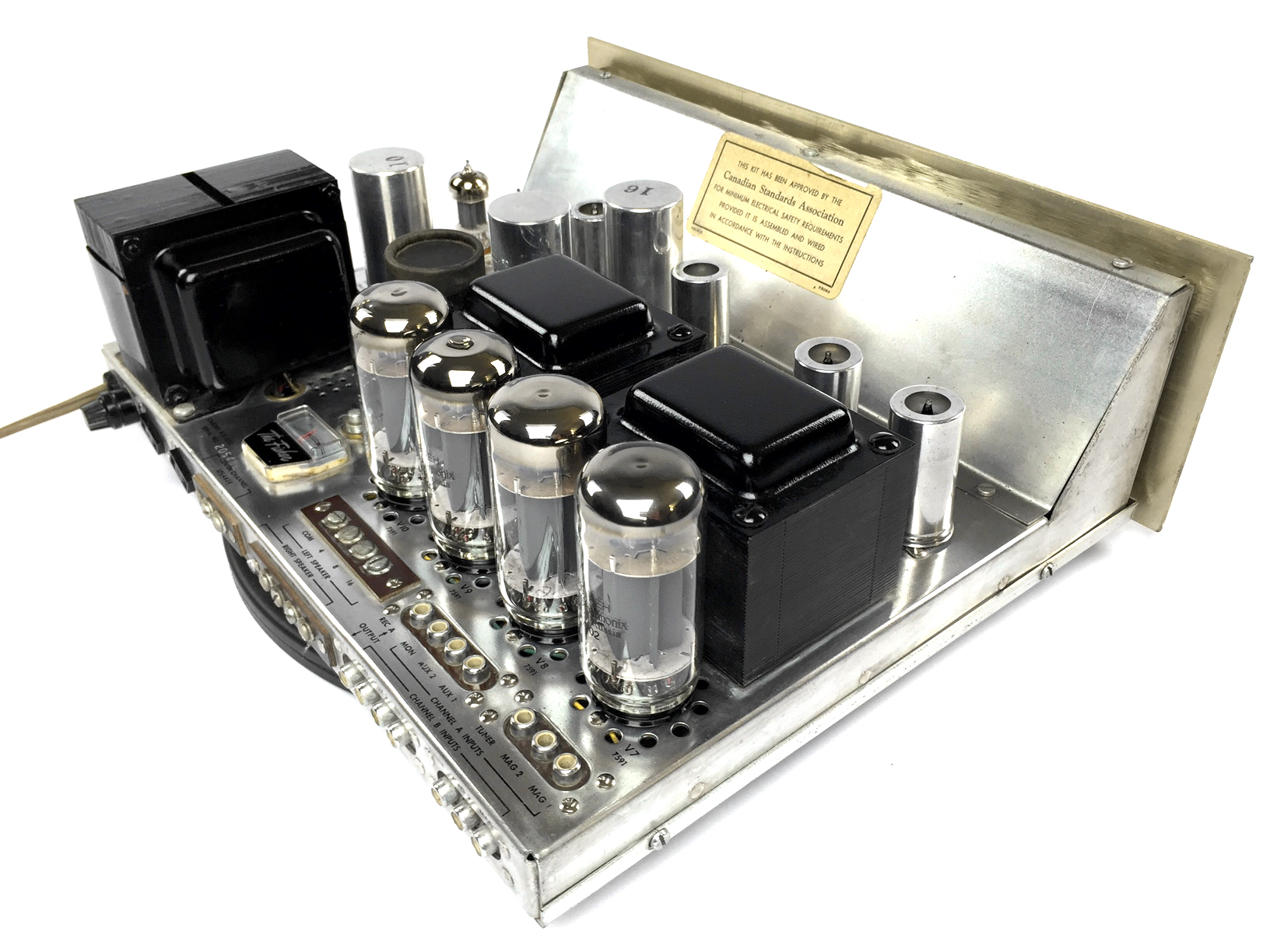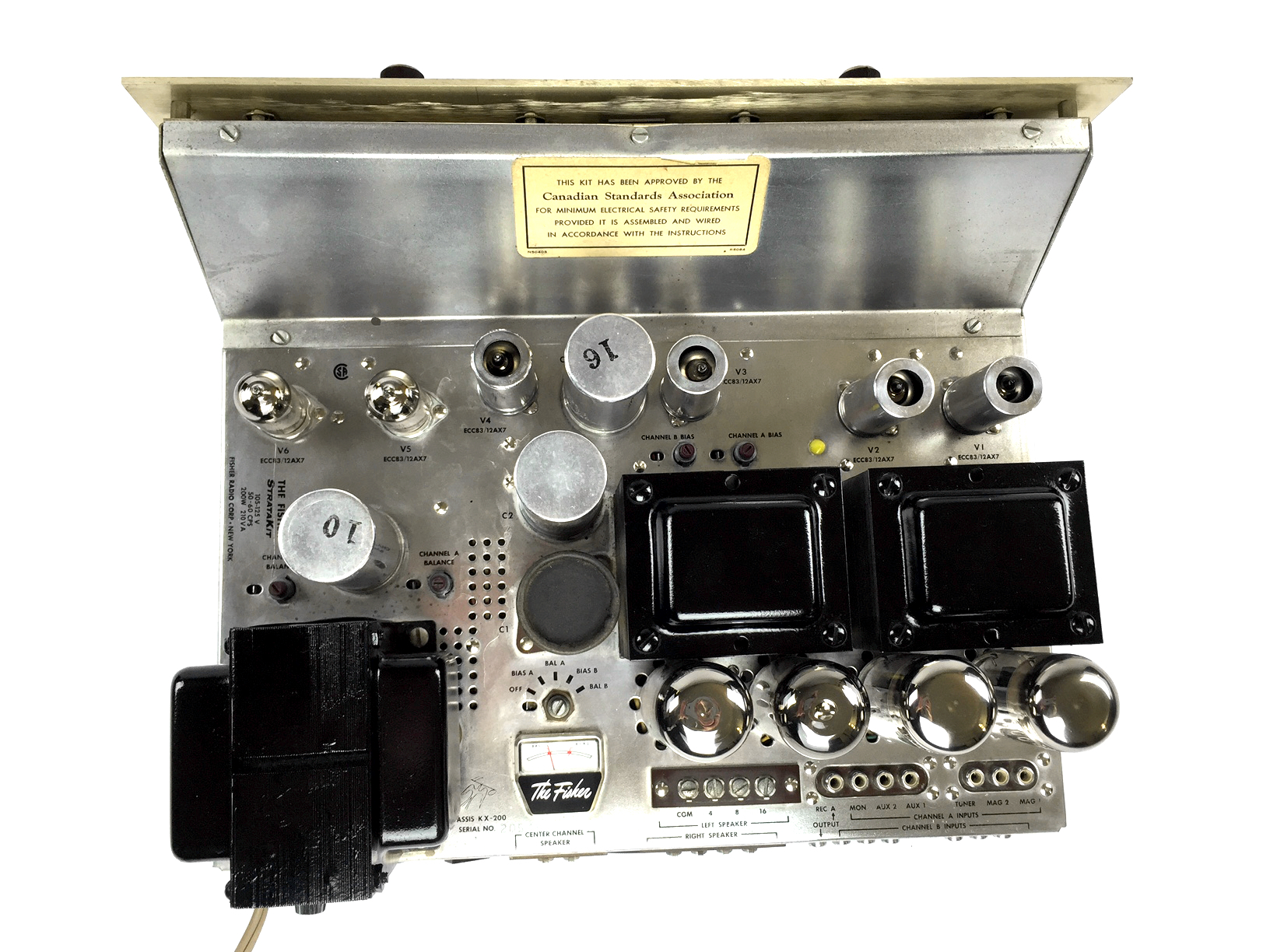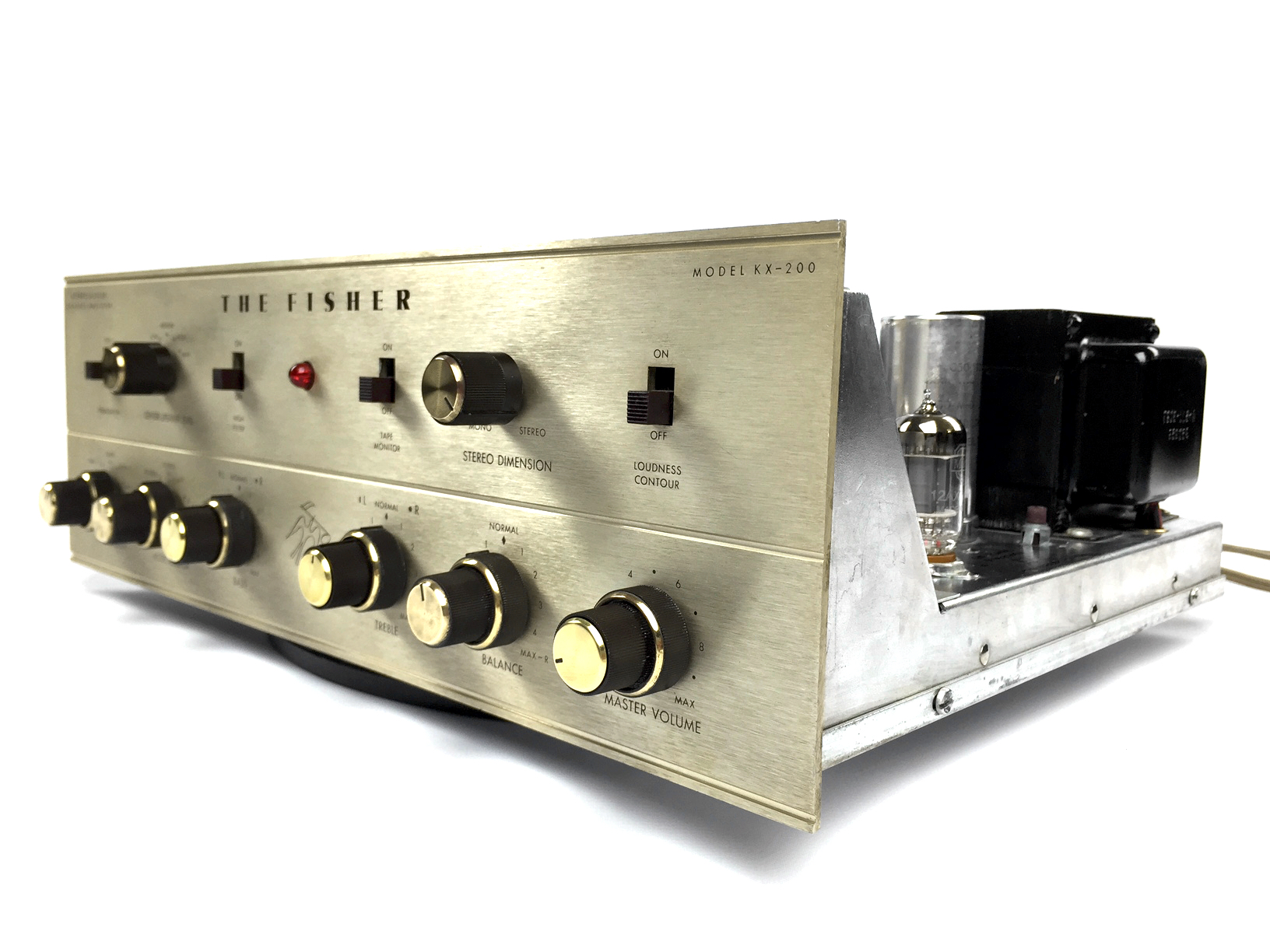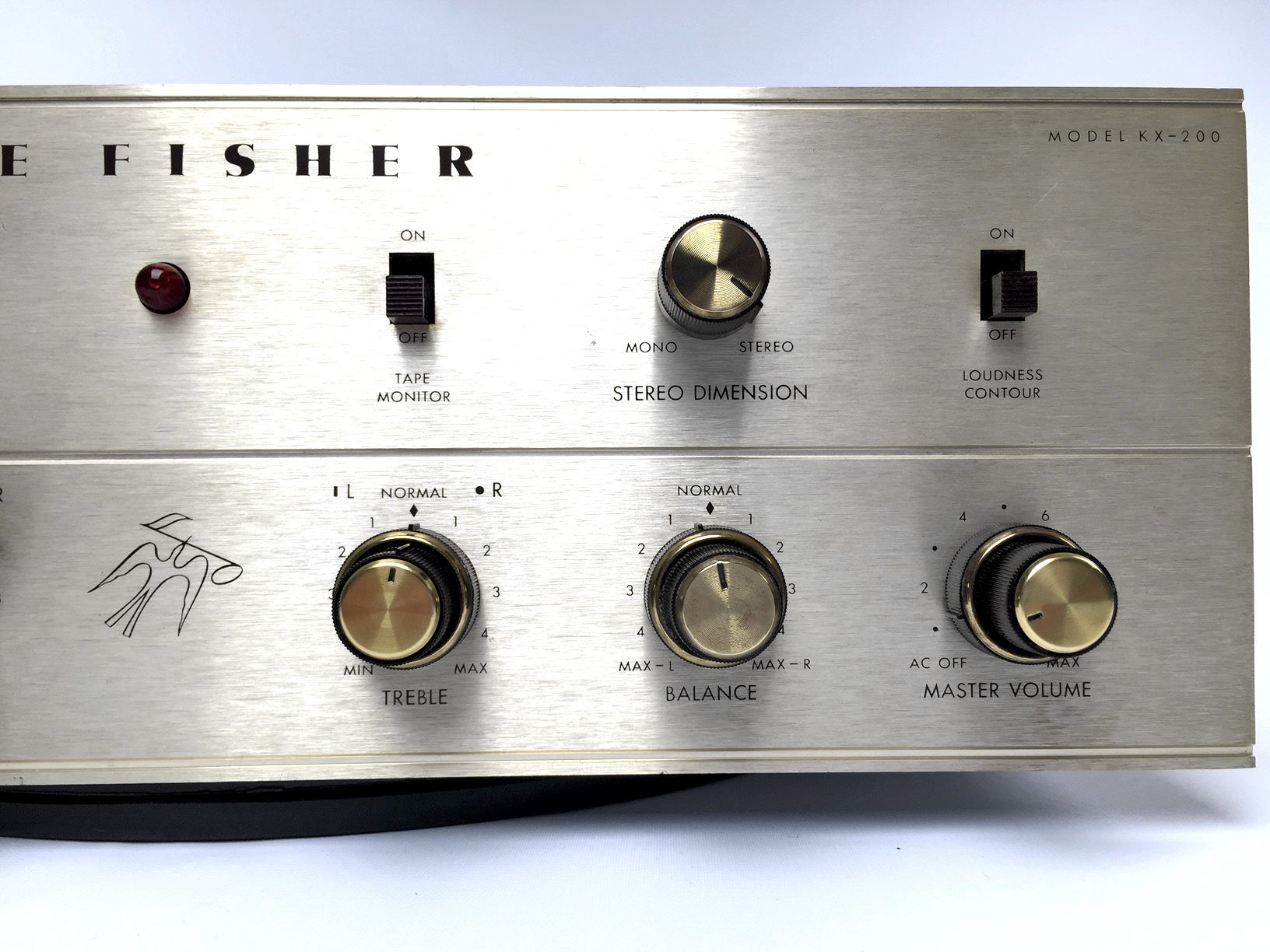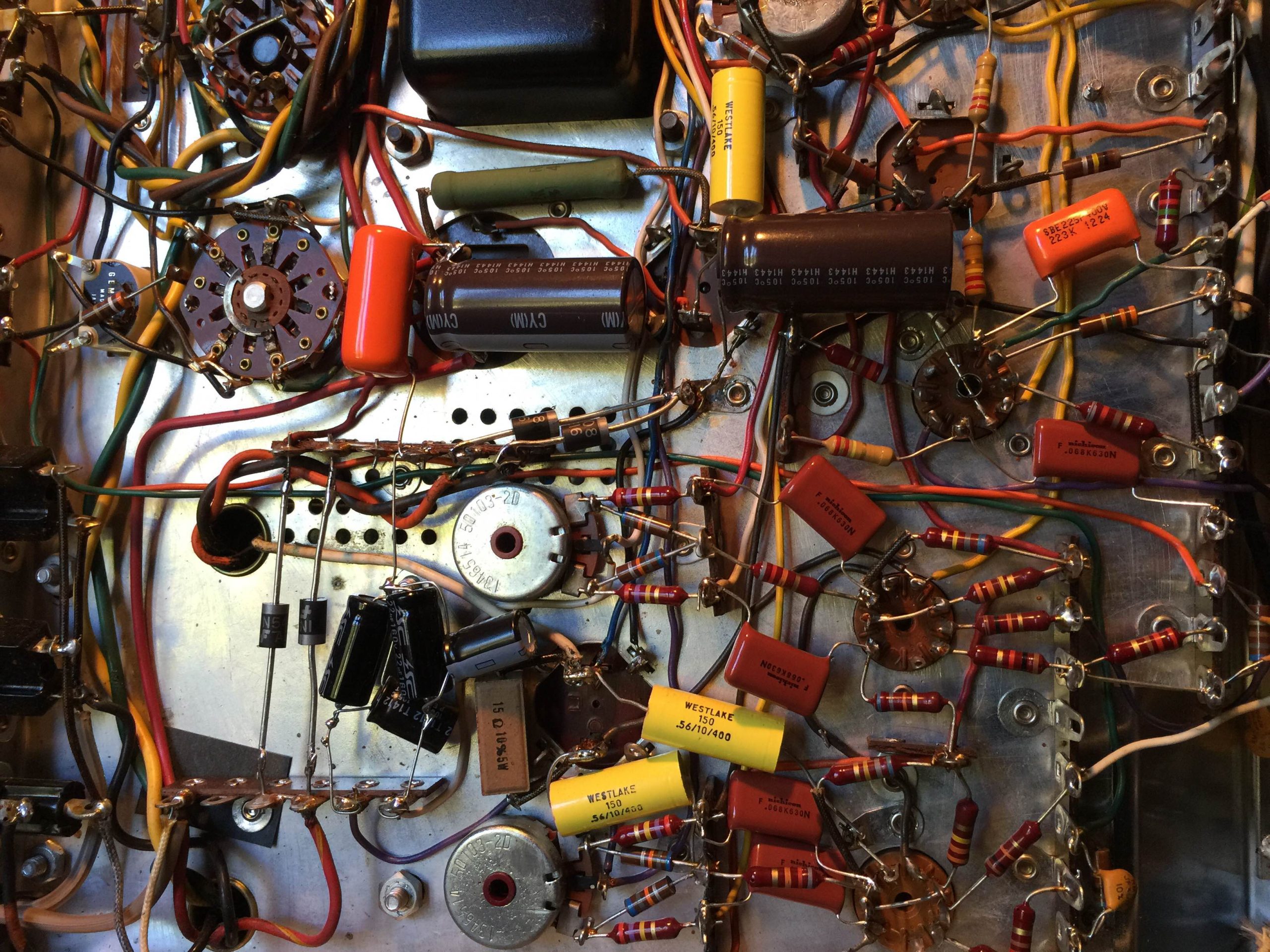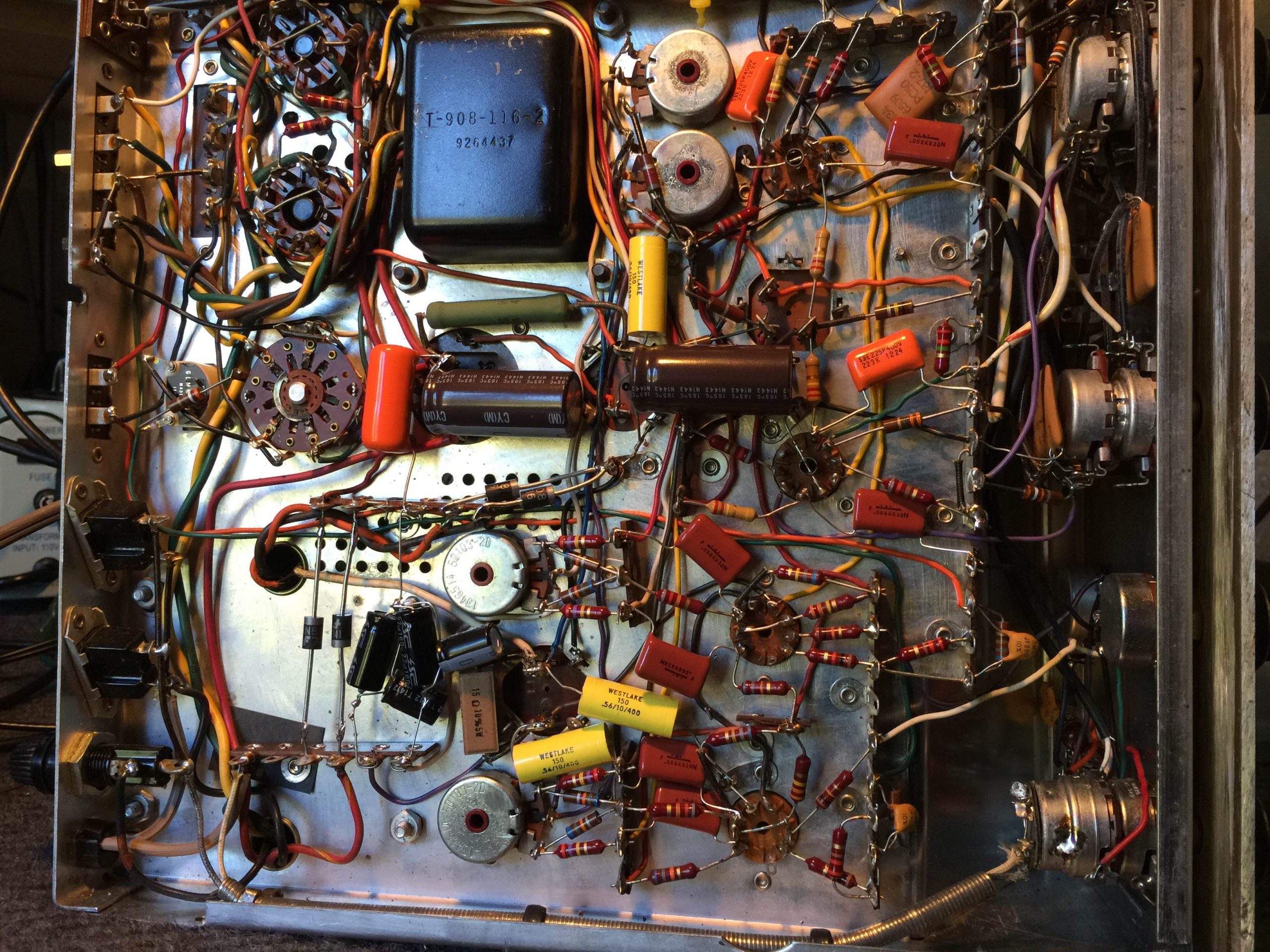Fisher KX-200 – Silver Restoration [SOLD]
$800.00
This is the kit version of the factory wired KX-200. It has been meticulously restored to the AEA Silver Level. Cosmetically, electronically and sonically, it is in virtually perfect condition.
Out of stock
Description
A beautiful Silver Level restored 1960 Fisher KX-200 35 watts per channel amplifier
This is the kit version of the factory wired KX-200. It has been meticulously restored. Cosmetically, electronically and sonically, it is in virtually perfect condition.
All capacitors have been replaced with types of the highest quality. The output coupling caps are Jensen Copper Foil – Paper in Oil, some of the best you can buy. All line amp and phono stage capacitors are rare polystyrene types.
The power supply has non-polar polypropylene filter caps and MOV inrush current limiting added.
The 12AX7’s consist of new Mullards hand selected for low noise in the phono stage, and Electro-Harmonix 12AX7-EH’s in the line amp and drivers. The output tubes are a perfectly matched quad of Electro-Harmonix 7591A-EH
Details:
- Faceplate, Knobs and Chassis in very good condition
- Re-caped and all resistors checked – 9 resistors, 17 capacitors and two rectifier diodes were replaced using top-quality components
- All switches and controls were cleaned and lubricated
- All switch contacts were hand burnished
- All controls function perfectly
- Driver balance and bias circuit critically aligned
With our 14 day money-back satisfaction guarantee.
This video also provides a brief tour of the ‘business-end’ of our listening room, along with our A/B switching setup. The large screen is displaying our patent-pending real time spectrum display comparing the input signal and output signals while the amplifier plays music.
Our unique computer analysis measurement system allows AEA to not only measure the performance of amplifiers while they are playing music; it allows us to “see” why one amp sounds different than another, and use that insight in designing each stage of the amplifier. The results speak for themselves. Or should we say, “sing for themselves.”


